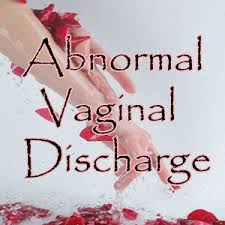If your vaginal discharge looks abnormal, it could be a sign of a health problem. Here is everything you need to know about keeping your vaginal healthy and clean.
One of the very disturbing issues when it comes to women’s health is the issue of discharges.
A lot of women are always confused concerning how to know at what point a discharge will be said to be dangerous or normal.
At what point does a discharge become harmful to the reproductive system? This is what you will learn in this write-up…enjoy it!
Basically, vaginal discharge usually work to keep the genital area clean and healthy. But if it looks or smells abnormal, it could be a sign of a health problem.
Paying attention to your vaginal discharge is smart self-care. But do you know what’s normal — and what’s not?
Normal white discharge helps keep the vagina clean, lubricated, and free from germs and infections.
On the other hand, discharge that looks or smells abnormal can be a sign of health problems.
It’s also important to keep in mind that your menstrual cycle can influence the type of vaginal discharge you’ll have on any particular day — and the discharge during pregnancy will differ, too.
Vaginal Discharge During the Menstrual Cycle
All women produce discharges during their childbearing years, starting a year or two before puberty and ending after menopause.
However, the colour and thickness of vaginal discharge will vary during the menstrual cycle, depending on the levels of oestrogen circulating in the body.
After your period ends, you’ll have thick, white discharge. But around 14 days after your period ends — around the time of ovulation — your vaginal discharge will turn clear and become watery and so elastic that it can form thin strands or ropes.

When your ovary releases an egg in the middle of your menstrual cycle, your body also increases the production of vaginal discharge.
It’s common to have 30 times more vaginal discharge in the middle of the menstrual cycle. This wetness is a sign that you’re ovulating.
After the middle of your menstrual cycle, your discharge will start to thicken. When you get towards the end of your menstrual cycle — close to when you start your period — you’ll have white discharge again.
There’s nothing you can do to reduce the amount of vaginal discharge or change its consistency — and you wouldn’t want to anyway.
This discharge is your body’s way of flushing out bacteria.
Vaginal Discharge During Pregnancy
The same kind of white discharge you may have noticed early in your menstrual cycle will continue after you’re pregnant.
What’s the big change? There will be a lot more of it.
Because of greater blood flow to the vagina and a boost in oestrogen production, discharge in pregnancy will be in overdrive.
You may want to wear a panty liner to avoid wetness on your clothes. This increase in vaginal discharge will continue until delivery of your baby.
A few weeks before your delivery date, you’ll notice another increase in the amount of discharge, as well as a thicker consistency.
This occurs because the mucus plug, which fills the tiny opening to the cervix, is being discharged in preparation for labour.
Amniotic fluid may also leak steadily, in tiny amounts, as your body prepares for birth. But if there’s a sudden gush of fluid, get to the hospital right away. This means that your water broke and you’ll be giving birth soon.
If you’re not yet at 37 weeks, call your doctor immediately if you notice a sudden increase or change in the colour of your discharge in pregnancy, especially if it’s tinged with blood. This could be a sign of preterm labour.
When Vaginal Discharge Isn’t Normal

While discharge is normal most of the time, in some instances it can indicate an infection.
Normal discharge is clear or white and doesn’t smell bad.
You should be concerned if your vaginal discharge is yellow, grey, or green, has a clumpy texture like cottage cheese, or has an abnormal odour.
Abnormal discharge could signal one of these conditions:
Vaginosis – Vaginal discharge that is yellow, green, or grey could indicate vaginosis, which is a bacterial vaginal infection. Another clue that you may have this type of infection: Your vaginal discharge will have a fishy smell.
Yeast infection – A white discharge that looks like cottage cheese is the cardinal sign of a yeast infection. You’ll probably also have intense itching and may notice some swelling around the vulva.
Trichomoniasis – Discharge that gives off a strong, unpleasant odour similar to that of rotten eggs is usually a sign of the sexually transmitted disease (STD) trichomoniasis. The vaginal discharge may also be frothy.
Chlamydia or gonorrhoea – If you’re not pregnant or in the middle of your menstrual cycle, a sudden increase in the amount of vaginal discharge could be a symptom of one of these STDs. Chlamydia and gonorrhoea can also cause a burning sensation when you urinate.
To prevent unhealthy vaginal discharge, keep the genital area clean and dry, avoid douching, always use condoms during sex if you have more than one partner.
Good hygiene and practicing safe sex are the best ways to keep your vaginal discharge normal and healthy.
If you need any natural remedy for any ailment, click here to have a look at our collection of natural remedies.
Don’t forget to share this write-up with other women to also benefit. You can add your comments, observations and question in the comment box below.
Stay Healthy And Never Give Up!
Plan B Wellness Center
Email – consult@www.planbwellness.com
Twitter – @planbwellness
Tel/Whatsapp – +2348099666650










[…] watery, cottage cheese-like, yellow, smelly or other abnormal vaginal discharges are early indications of a possible dysfunction of the […]